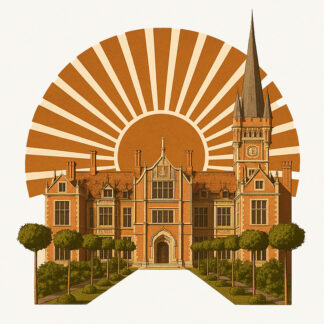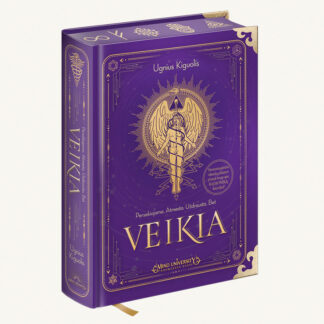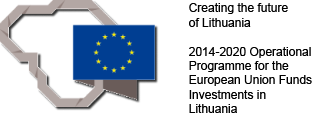Part I. The Cross, the Sword, and Gold
The seminar series is based on Viktor Jašinskas’ book “Empire of Three Cities: Chronicles of a Thousand Years,” which is not just a dry textbook or a didactic treatise. It is an engaging and lively narrative inviting us to look behind the scenes of history, to understand how the mechanisms of power work, and to get closer to the truth that is often hidden behind carefully crafted lies.
We live in an era when wars, crises, and manipulation cloud our minds, while their true causes are often veiled in deception. From childhood, we are shaped by schools, “expert” opinions, and the media, which build a one-sided worldview—one where doubt is seen as rebellion and questions are treated as destruction of the system. Many adapt to this order, but some hear an inner voice—a quiet but persistent urge to unravel the complex game called the World. This voice encourages us not to believe blindly, but to explore and seek the truth, no matter how uncomfortable it may be.
“Empire of Three Cities” opens up a thousand-year panorama of history, revealing the backstage of power—from the crusader orders that ruled with sword and faith, to today’s megacorporations whose wealth surpasses the treasuries of entire countries. The book draws the power triangle linking the Vatican, the City of London, and Washington, D.C.—three shadowy centers in the heart of Rome, London, and the District of Columbia. Like invisible hands, these centers pull the strings that control the economy, politics, and our minds.
The book “Empire of Three Cities: Chronicles of a Thousand Years” is an impressive thousand-year odyssey, made up of seven parts, each with seven chapters—a total of forty-nine chapters, ending with an epilogue and a manifesto for future generations. It calls us to reflect on past lessons, to understand the causes behind current events, and to inspire the creation of a fairer future. So let’s travel to France, where a new era is brewing in the mist of the eleventh century, and in the square at Clermont, the Pope’s words ignite a flame that will burn down the old world and open the path to a new one.
1.1 The Flame of Clermont: The Birth of the Holy War
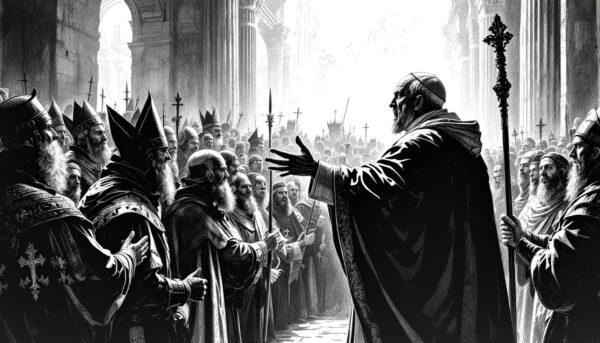
At the end of the eleventh century, in November of 1095, in Clermont Square, Pope Urban II’s call “Deus vult—God wills it!” lit the fire of the Crusades. The First Crusade, led by knights like Godfrey of Bouillon, conquered Jerusalem in 1099, but victory was marked by massacres. Behind the holy purpose were Urban’s political maneuvers: to unite a fractured Europe, redirect feudal aggression to the East, and strengthen the Vatican’s influence. Venetian merchants supplied ships and opened trade routes, while Byzantium, which had requested help, later became a trophy for the Crusaders, as seen in the Fourth Crusade. These expeditions, veiled in faith, became arenas of power, wealth, and ambition, leaving behind a legacy soaked in blood.
1.2 Christian Orders: Warriors of Faith
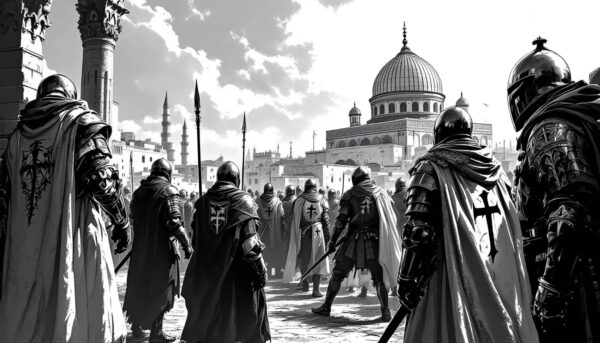
In 1119, the Knights Templar were founded in Jerusalem, sworn to protect pilgrims. Their white cloaks with red crosses became a symbol of sanctity, but the Templars, controlling fortresses and creating early banking, grew into a financial empire. Their wealth drew the envy of King Philip IV of France, and in 1307, on Friday the 13th, the order was destroyed—the Grand Master Jacques de Molay was burned at the stake, leaving behind legends of hidden treasures and a curse that haunted the king.
1.3 The Baltic Crusades: The Conquest of the North
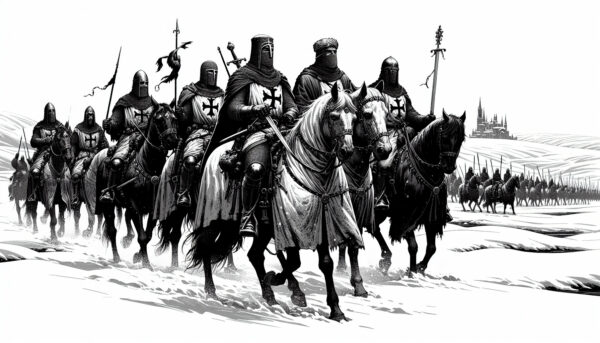
The Baltic Crusades are another drama of this era, often overshadowed by the glory and hardship of the wars for Jerusalem. In the mist-shrouded lands of the Prussians, Lithuanians, and other pagan tribes, the Teutonic Order sought not only to baptize but also to conquer and enslave with the sword and the cross. These campaigns, masked in Christianity, were ruthless games of power, building an empire of Vatican influence in the North. Local tribes resisted, sometimes forging unexpected alliances, but the Crusader castles and military machine were well-funded and merciless. The conquest of the North reveals how faith became a pretext for territorial expansion, and the suffering of local people—the price for “civilization.”
1.4 Venice and Genoa: City-States
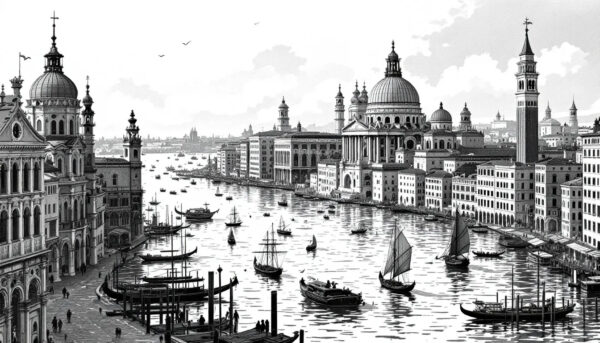
While swords clashed on medieval battlefields, the ships of Venice and Genoa sailed the waves of the Mediterranean—these cities were the symbols of power, wealth, and influence of their times. Venice and Genoa, as thriving city-state republics, built vast trade networks connecting Europe to the edges of the Silk Road, Middle Eastern bazaars, and Asian ports. These networks carried not only goods, but also ideas, culture, and ambitions, shaping the economy of the medieval world.
1.5 The Golden Horde: Riches of the Silk Road
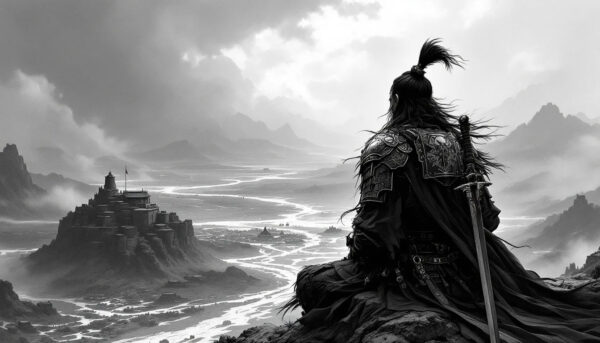
At the start of the thirteenth century, Genghis Khan’s military campaigns united the nomadic tribes, creating an empire that became not only a military force but also the keeper of the Silk Road. His army, famous for its speed and strategy, conquered cities from Beijing to Kyiv, and his governance, based on discipline and tolerance, allowed trade to flourish. Gold, spices, fabrics, slaves, and opium flowed along Mongol-controlled routes, making the Golden Horde a key player in the global economy. Although Europeans often called the Mongols barbarians, their efficient postal system and protection of trade routes astonished the world.
1.6 The Hundred Years’ War: The Black Death
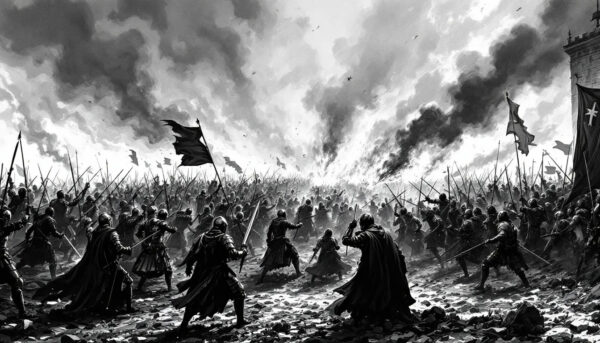
The fourteenth century was a true trial for Europe, as the Hundred Years’ War and the Black Death shook the continent, changing its political, social, and economic face. From 1337 to 1453, the Hundred Years’ War between England and France was not just a struggle of royal ambitions but an arena for the redistribution of power. Battles such as Agincourt, where English archers crushed the French, or the siege of Orléans led by Joan of Arc, became legends. Yet behind them lay economic interests—the struggle for lucrative trade routes and territories. By the end of the war, France was strengthened and laid the foundations for national identity, while England began to form centralized government, changing the balance of power in the medieval world.
1.7 The Great Schism: Rome and Avignon
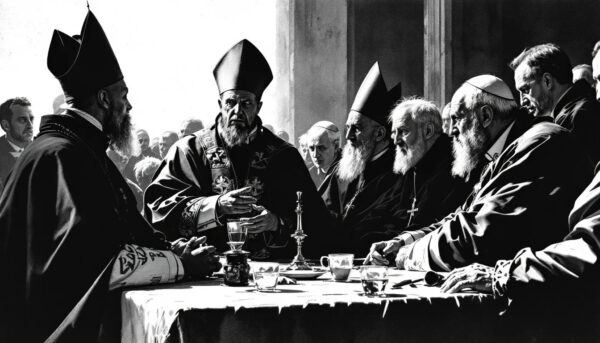
The fourteenth century was stormy for Europe, but the Great Western Schism, lasting from 1378 to 1417, shook Christianity even more deeply than wars or plague. In Rome, crowds demanded an Italian pope, and Urban VI, elected in 1378, promised reforms but his harsh rule alienated the cardinals. The French cardinals, supported by King Charles V, crowned Clement VII in Avignon, dividing the Church in two. Later, in 1409, the Council of Pisa elected a third pope, causing even greater chaos. This schism, financed by the banks of Venice and Genoa, became a game of power, with faith as nothing more than a mask.

